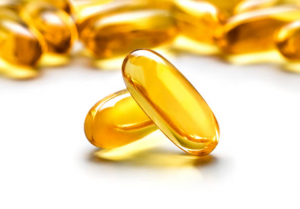A Method to Determine Omega-3 Index
Tech ID
23-029
Inventors
Philip Britz-McKibbin
Ritchie Ly
Patent Status
US provisional filed
Development Status
Proof of principle data available
Contact
Amy Hector
Business Development Manager
Abstract
Decades of contentious public health guidelines to reduce dietary fat intake has spurned the need for objective biomarkers associated with cardiometabolic health for chronic disease prevention, such as the omega-3 index (O3I). Conventional methods for determination of O3I status however rely on the analysis of omega-3 fatty acid content from erythrocyte phospholipid membranes that is not convenient for routine screening. This is important for cardiovascular risk assessment in the population and verifying the impact of dietary changes and/or supplement use on an individual level given variations in treatment responses.
A team of researchers from McMaster has applied a high-throughput method for untargeted lipidomic analysis using multisegment injection-nonaqueous capillary electrophoresis-mass spectrometry to identify circulating phospholipid species that may serve as surrogate biomarkers of O3I status [1]. Two specific circulating phosphatidylcholine (PC) species reflecting EPA and DHA in plasma or serum were identified to be responsive to high-dose omega-3 fatty acid supplementation while also being correlated to conventional O3I measurements derived from red blood cell membrane lysates. Importantly, this discovery enables routine analysis of the O3I when using small volumes of serum/plasma, as well as dried blood spots on filter paper cards for home testing applications.
Applications
- Quantitative assessment of omega-3 nutritional status that may be able to assess risk for future cardiac events using conventional blood samples, such as serum or plasma that is complemenatry to existing lipid panels.
- Personal wellness applications to optimize dosage of omega-3 fatty acid supplements or dietary interventions using dried blood spots for self-sampling at home.
- The phosphatidylcholine biomarker panel can be measured by various other methodologies, including direct infusion-, ion mobility- and liquid chromatography-mass spectrometry.
Advantages
- This discovery offers a more direct, cost-effective and practical approach for the quantitative assessment of omega-3 nutritional status using smaller volumes of conventional blood specimens without complicated sample workup procedures.
References:
- Ly et al., (2023). Lipidomic studies reveal two specific circulating phosphatidylcholines as surrogate biomarkers of the omega-3 index. J. Lipid Res. 64(11), 100445. DOI:https://doi.org/10.1016/j.jlr.2023.100445.
Image obtained from: https://www.istockphoto.com/photo/two-capsules-omega-3-isolated-on-white-background-gm654379506-119100975?phrase=omega+3+fish+oil



